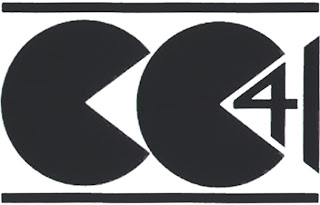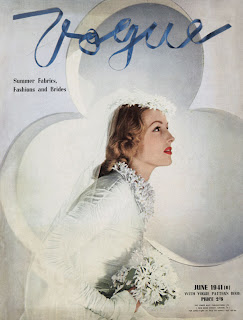Monday, 31 October 2011
On saturday night i went to a festival in London at Battersea power station and saw this band 'Everything everything'. The band name above was at the back of the stage and caught my attention throughout the whole gig. I love it. Im glad it did as most of my briefs have been about creating my own typeface so i know i'm on the right track.
Thursday, 13 October 2011
Ted Baker
During World War II all sorts of essential and non-essential foods were rationed, as well as clothing, furniture and petrol.
Why was rationing introduced?
To make the British weak, the Germans tried to cut off supplies of food and other goods. German submarines attacked many of the ships that brought food to Britain.
Before the war, Britain imported 55 million tons of food, a month after the war had started this figure had dropped to 12 million.
The Ration Book became the key to survival for nearly every household in Britain. Every member of the public was issued with a ration book.
What were ration books?
They were books which contained coupons that shopkeepers cut out or signed when people bought food and other items. (People still paid for the goods with money.)
Why were there different colour ration books?
'The colour of your ration book was very important as it made sure you go the right amount and types of food needed for your health.
Buff-coloured ration books - Most adults had this colourGreen ration books - Pregnant women, nursing mothers and children under 5. They had first choice of fruit, a daily pint of milk and a double supply of eggs.Blue ration books - Children between 5 and 16 years of age. It was felt important that children had fruit, the full meat ration and half a pint of milk a day.
Why did the government issue ration books?
To make sure that everybody got a fair share of the food available.
The government was worried that as food and other items became scarcer, prices would rise and poorer people might not be able to afford things. There was also a danger that some people might hoard items, leaving none for others.
Rationing was introduced to make sure that everyone had a fair share of the items that were hard to get hold of during the war.
When was rationing introduced?
Rationing was introduced at the beginning of 1940.
National Registration Day
On National Registration Day on 29 September 1939, every householder had to fill in a form giving details of the people who lived in their house.
How did rationing work?
Using the information gathered on National Registration Day, the government issued every one with an identity card and ration book.
Register with local shops
Each family or individual had to register with a local supplier from whom the ration would be bought. These details were stamped in the book and you could only buy your ration from that supplier.
Each family or individual had to register with a local supplier from whom the ration would be bought. These details were stamped in the book and you could only buy your ration from that supplier.
Coupons
The books contained coupons that had to be handed to or signed by the shopkeeper every time rationed goods were bought. This meant that people could only buy the amount they were allowed.
The books contained coupons that had to be handed to or signed by the shopkeeper every time rationed goods were bought. This meant that people could only buy the amount they were allowed.
Was rationing fair?
Some people considered food rationing to be very unfair. Eggs, butter and meat could be obtained fairly easily without coupons in rural areas.
By the summer of 1941 greengrocers in the towns were taking their lorries into the country to buy vegetables direct from growers.
When did food rationing stop?
Fourteen years of food rationing in Britain ended at midnight on 4 July 1954, when restrictions on the sale and purchase of meat and bacon were lifted. This happened nine years after the end of the war.
Wednesday, 12 October 2011
Ted Baker
As i have based my typeface on World war 2 I also want the rest on my window display so be based on WW2. I therefore want to create the look of the lights from air raids and give the atmosphere of the war.
Air raids on London began in September 1940. This was the start of the blitz. Lots of other places were bombed, including industrial cities and ports such as Birmingham, Coventry, Southampton, Sheffield, Manchester, Liverpool, Hull and Glasgow. There were air raids on seaside towns, such as Eastbourne, and on cathedral cities such as Canterbury.
Air raids on London began in September 1940. This was the start of the blitz. Lots of other places were bombed, including industrial cities and ports such as Birmingham, Coventry, Southampton, Sheffield, Manchester, Liverpool, Hull and Glasgow. There were air raids on seaside towns, such as Eastbourne, and on cathedral cities such as Canterbury.
In 1944, Britain faced attacks from new weapons. First came the V-1, a robot 'flying bomb'. Then there was the V-2, a rocket which flew so fast no-one could see or hear it coming. London was the main target for V-1 and V-2 attacks.
Air raids on London began in September 1940. This was the start of the blitz. Lots of other places were bombed, including industrial cities and ports such as Birmingham, Coventry, Southampton, Sheffield, Manchester, Liverpool, Hull and Glasgow. There were air raids on seaside towns, such as Eastbourne, and on cathedral cities such as Canterbury.
In 1944, Britain faced attacks from new weapons. First came the V-1, a robot 'flying bomb'. Then there was the V-2, a rocket which flew so fast no-one could see or hear it coming. London was the main target for V-1 and V-2 attacks.
Monday, 10 October 2011
I want to make my labels look like this style from the 1940's and as I have now made my typeface I
would like to find the right stop and screen print my designs and type onto the stock.
Screenprinting wasn't something I originally wanted to do in this project but I do not think I will get the same effort if I don't and I am fairly confident in screen printing so I don't think its going to be an issue.
Wednesday, 5 October 2011
Im not really sure why yet but I am really fascinated by the CC41 label. I think I may want to
incorporate into my branding for the 1940's inspired collection I am creating.
Women
As a result of the war there were severe fabric shortages, which lasted until the end of the decade. Clothes were made with a minimum of fabric, few pleats and no trimmings. Skirts were a little below the knee and straight, worn with boxy jackets and broad, padded shoulders. Many men and women wore uniforms. From 1942 onwards some clothes were made under the government Utility Scheme that rationed materials. They are identifiable by a 'CC41' stamp, which is an abbreviation of the 'Civilian Clothing Act of 1941'. During the war, accessories were important because of their relative affordability; tall platform shoes or sandals, and tall flowery hats were fashionable. Hair was worn long, with sylised waves and rolls on top of the head. In 1947, Christian Dior introduced his 'New Look', which revolutionised1940s fashion. Skirts became longer and fuller, and boxy shoulders were softened to become sloping. Waists were cinched and hats grew wide and saucer shaped.
Men
During the war, most men wore military uniform of some kind. Hair was short at the back and sides, and most men were clean shaven. Men in civilian clothing were often dressed in lounge suits with broad shoulders, with wide trousers belted high at the abdomen. After 1945 many men leaving the armed forces were issued with a 'de-mob' suit, consisting of shirt, tie, double-breasted jacket and loose fitting trousers.
Below are a selection of images of fashion from the 1940s.
This work i found on Form's website shows the branding for the Spring/summer 'pure' website for Lettuce. The swing tags and trade stands are a perfect example of the kind of thing i want to
do for the Ted Baker brief i have chosen. Although i am currently re-writing the brief as
i would like to do the branding for another shop instead.
I think its important to look at lots of different styles from the 40's not just from fashion magazines so i've found some other magazines for inspiration for my typeface.
Subscribe to:
Comments (Atom)





















































